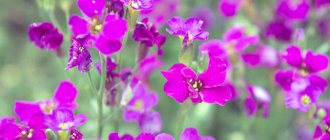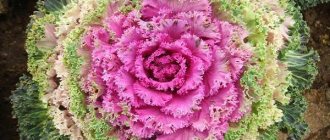- Description of eustoma
- Types and varieties of eustoma
- Russell's potted eustoma (Eustoma Russelianus)
- Garden eustoma grandiflorum (Eustoma Grandiflorum)
- Planting eustoma for seedlings
- Soil for growing eustoma
- Caring for eustoma seedlings and seedlings
- How to grow eustoma in peat tablets
- Prevention of diseases of eustoma seedlings
- Growing potted eustoma: care at home
- Watering and feeding eustoma
- Lighting and temperature conditions
- Eustoma flowering
- Eustoma after flowering: dormant period
Eustoma or Irish rose is a beautiful legendary flower native to North America. Despite its overseas roots, this culture has successfully taken root in our country.
Lisianthus is also grown by enterprising people, because a cut flower can stand in a vase for 18-20 days.
First of all, this plant is grown for cutting. Beautiful flowers, reminiscent of delicate silk half-opened roses, last a long time in bouquets. A wide palette of colors, the tenderness of the flower with amazing durability always surprises. Eustoma is grown as a garden, greenhouse, and indoor crop. And in any capacity, the plant will require very careful care, but even a novice gardener, having received the necessary knowledge about planting and care, will be able to enjoy a flowering plant in the garden or at home.
Description of eustoma
Known among flower growers also under the name of Russell's lisianthus, Irish, Japanese rose, Texas bell or love rose, eustoma is one of the most beautifully flowering crops. In both horticulture and floriculture, it is represented by only one species - grandiflora eustoma (eustoma grandiflorum).
Previously, three separate species were recognized in the genus Eustoma. However, joint work by employees of the Royal Botanic Gardens at Kew (UK) and the Missouri Botanical Garden (USA) to streamline the nomenclature of modern plant taxa, united the following species under a single name - Eustoma grandiflorum: Eustoma grandiflorum, Lisianthus - Eustoma Roussel's, or Russell's (Eustoma russellianum), Eustoma minor, Gentian minor, Western gentian, Blue marsh Eustoma (Eustoma exaltatum).
Wild form of eustoma.
Eustoma grandiflora is a luxurious plant from 30 to 90 cm in height with branched shoots, simple, elegant leaves with a bluish tint and flowers reminiscent of a hybrid of roses and poppies. Up to two dozen large luxurious flowers bloom on one plant per season, and due to the fact that they open not simultaneously, but alternately, eustoma remains attractive for an amazingly long time.
The ability of buds to bloom after the flowers wither is also preserved in bouquets: when buying eustoma or displaying it in vases, you can be sure that each bud will in turn turn into a beautiful Japanese rose. Each plant looks like a bouquet: due to its specific branching, strong, but slender, fan-shaped, eustoma really seems like a bouquet planted in a pot.
Eustoma, cultivar 'Borealis Blue' and yarrow cultivar 'Moonshine'.
Flowering of eustoma depends on the timing of sowing and begins 20 weeks after sowing. For classic garden eustomas, it starts in June-August and lasts until mid-autumn, because the plant will not stop delighting with flowers until the frost reaches -10 degrees and snow falls.
The color palette of eustoma today includes not only white, purple, pink, yellow, orange colors, but also various two-color and watercolor combinations. Compact indoor eustomas have colors that are usually clean and quite bright, while garden ones have a much wider range of colors. It even includes light green and fruity shades.
Variety of colors of eustoma.
The huge assortment of eustoma and its popularity all over the world are the merit of breeders in the USA and Japan. In the West, this plant is one of the most popular cut species, but here, too, this Japanese beauty is slowly gaining ground.
general description
Eustoma is an incredibly beautiful flower. Irish rose is extremely popular among gardeners and indoor plant lovers. The flower looks great in bouquets, in no way inferior to roses. At the same time, eustoma remains in a vase with water for a very long time, unlike roses.
In nature, eustoma is a perennial plant common in the central and southern states of the United States and the Caribbean. In open ground, eustoma can also be grown as an annual.
The plant has fairly large wide petals arranged in two rows. Double inflorescences are located on long thin stems with large elongated oval leaves. The stems of the plant grow to a height of one meter. Approximately in the middle, the stem begins to branch, due to which the eustoma branch takes on the shape of a bouquet. There can be up to 35 buds on one branch, which bloom alternately. The leaves of eustoma are matte green with a bluish or gray tint.
The flowers of wild eustoma are bright blue. Varieties developed by breeders include plants with white, pink and lavender shades of petals. There are also varieties with white petals, along the edge of which there is a pink or blue edging.
Russell's potted eustoma (Eustoma Russelianus)
This flower has a small compact bush, its height rarely exceeds 30 centimeters. Let's get acquainted with the most popular varieties of potted eustoma:
Mermaid variety. Lisianthus Little Bell.
The Mermaid variety has simple inflorescences up to 6 centimeters in diameter. The petals are pink-lilac or blue, the maximum height of the crop is 15 centimeters. The bush develops well and does not need pinching to form additional side shoots.
Lisianthus Light Bell is up to 15 centimeters tall with small simple inflorescences of different colors. The culture bushes well and does not require pinching of shoots.
Variety Fidelity.
Florida Pink variety.
Variety Fidelity is a beautiful flower with many white inflorescences. A feature of the culture is the spiral arrangement of peduncles.
The Florida Pink variety is a fairly compact bush up to 20 centimeters in height. The inflorescences are pink with simple petals that form a beautiful bouquet.
Rozzi variety. Variety Sapphire.
The Rozzi variety is one of the tallest crops of the species in question, its height reaches 30 centimeters. Double inflorescences with white, blue or pink petals.
Variety Sapphire with simple or double petals. The inflorescences have different colors, the height of the bush reaches 30 centimeters.
Variety Echo.
Variety Aurora.
Brief description of the flower
Lisianthus is an attractive flower with waxy, glaucous leaves and large funnel-shaped flowers with double or simple petal texture. The flowers of large-flowered varieties reach up to 8-9 centimeters in diameter. The color of the petals is very diverse: white with shades, pink, violet, purple. Varieties have been bred in which white petals are colored with a colored border.
Half-opened eustoma looks like rosebuds, and when fully opened, it looks like large poppies. The strong stems of tall bushes are 80–90 cm long. Such bushes begin to branch strongly from the middle of the stem, so just one eustoma looks like a whole lush bouquet. There are often rave reviews among gardeners: from 30 to 40 buds form and bloom on one bush!
If we compare the buds of roses and eustoma, then the buds of the latter are more “loose” and not so elastic. And the bud has fewer petals than a rose bud. It is these qualities that give tenderness, airiness, and lightness to eustoma.
Garden eustoma grandiflorum (Eustoma Grandiflorum)
As the name suggests, this crop is grown as a garden plant. The flower is quite tall, similar in appearance to a rose, and is used for cutting and making bouquets.
Let us describe the popular varieties of large-flowered garden eustoma:
The Aurora variety of double lisianthus reaches 1.2 meters in height. Inflorescences of white, blue and pink shades. The peculiarity of the flower in question is the early formation of buds; it blooms two weeks earlier than the others.
Variety Echo with spreading thick stems up to 70 centimeters in height. It blooms early, forms large inflorescences, the petals have 11 different shades.
Heidi variety. Variety Eustoma Flamenco.
Variety Heidi . A medium-height species with simple, numerous inflorescences, it comes in 15 different color combinations. The height of the bush does not exceed 90 centimeters.
Variety Eustoma Flamenco up to 1.2 meters in height. The culture has powerful, well-developed stems and simple but large inflorescences, their diameter reaches 8 centimeters. The main advantage of Flamenco is its low maintenance requirements.
Variety Variety Twinkie. Variety Double White.
Variety Twinkie variety with simple inflorescences. Bushes up to 50 centimeters in height with pink, purple and yellow petals.
Variety Double White . A terry type with white inflorescences, a bush up to 70 centimeters in height, with powerful, erect shoots. It is low maintenance.
Eustoma – photo
Eustoma is, without exaggeration, one of the most spectacular garden flowers. Landscape designers, florists, breeders and organizers of flower exhibitions are delighted with it. We have collected a small selection of photos of this beauty!
Photo: oir.mobi
Photo: 2gis.ru Photo: artfile.ru
Photo: oir.mobi
Photo: rozsada.com.ua
Photo: oir.mobi
Photo: domashniecvety.ru Photo: funart.pro Photo: fermer.ru
Photo: oir.mobi Photo: t.me
Photo: mykaleidoscope.ru
Photo: multiurok.ru
Photo: mobilmusic.ru Photo: skolkogramm.ru
Photo: vkbase.ru Photo: sadartemenko.ru
Photo: flowers-store.ru
Photo: ogorodishe.ru
Photo: keywordbasket.com
Photo: liveinternet.ru
Photo: ru.wallpaper.mob.org
Photo: hammer-shop.ru Photo: udobreniya.net Photo: oir.mobi
Hydrangea (80 photos): types and features of care
Planting eustoma for seedlings
The seeds of the crop in question are quite small; they are supplied to stores in the form of pills. You can collect your own seeds if you have these flowers on your site, but in this case the difference between the parent and subsequent forms will be more and more felt every year.
Collecting seeds for seedlings:
- In order for the seeds to ripen, it is necessary to remove some of the inflorescences and move the plant indoors at the end of autumn.
- When frost occurs, the plant pots should be taken to a warm place and trimmed, leaving two pairs of leaves.
- Provide a temperature of 8 - 10 degrees, reduce watering, stop fertilizing. The flower remains in this state until March.
- The plant is well pollinated by insects and produces seeds in special boxes. Collecting such seeds is not difficult.
- First and second generation hybrids tend to inherit the traits of the parent plants, so feel free to collect seeds from your lisianthus plants within two years.
- Third-generation hybrids will not inherit the characteristics of the original plants, but as an experiment, you can try to sow seeds collected from third-generation plants.
Irish rose seeds.
Note! Coated seeds do not require preliminary preparation, because their shell already contains a sufficient amount of microelements and other nutrients.
Growing in a flowerbed
In order for the beauty to feel good in the flower garden, planting is planned in the right place. The place for the flower should be well lit by sunlight and have fertile soil. Just take into account that direct rays of the sun hitting flowers and leaves is destructive. For favorable cultivation, it is recommended to choose a site close to the crowns of ornamental or fruit trees.
After May 15, seedlings can be planted in the flower garden. The seedling is ready for transplanting when 5–8 true leaves form on the stem. The flower has a bush-like shape, and a distance of 10-15 cm should be left between the plants. Before planting, the plants are watered so that they can be removed from the pot along with a lump of earth. Holes are prepared in the flowerbed, the size of which corresponds to an earthen coma. The hole is watered with water, allowed to soak into the soil, and the eustoma with a lump of earth is carefully placed. The planting depth should correspond to that at which the plant grew before transplanting.
After planting, the hole is filled with soil. The plant is covered with half of a light plastic bottle.
This will protect against nighttime temperature changes. Also, the shelter will not allow moisture to quickly evaporate. Such a covering will allow the seedlings to adapt to new conditions in three weeks. 10 days after transplantation, the cover is removed during the day and put back at night. After another 10 days, the cover is completely removed.
Watering and fertilizers
Seedlings should be watered sparingly, as overwatering will lead to rotting of the roots.
Feeding of young plants begins after the seedlings have rooted, approximately a month after transplantation. During the growing season, the plant extracts the entire complex of nutrients from the ground, so it must be fed with special fertilizers. They should contain phosphorus, potassium and small doses of nitrogen substances. The best option would be a complex fertilizer, for example, ammophos, which is completely soluble in water. You need to feed the flowers at least twice.
We recommend studying: how to properly grow perennial mallow from seeds?
Bloom
Eustoma begins to bloom in the second decade of July and ends flowering in October. At first, the stem begins to branch strongly from the middle, then up to 20-30 buds are formed on each branch. One flower will bloom for about two months if it is not cut and placed in a vase. And if the eustoma is cut off, it begins to grow back from the root and blooms a second time. When autumn is warm, you can observe the second abundant flowering of eustoma.
Collecting seeds
Flowers are easily pollinated, and after a while boxes with numerous small seeds are formed, characterized by high germination. Seeds can be collected if an F1 hybrid is grown. The second generation of the flower is basically similar to the parent bush, but some differences also appear.
Diseases and pests
To protect against diseases during the growing process, it is necessary to carry out preventive spraying with fungicidal preparations. When the summer is rainy, they spray it with foundationazole. This will prevent and treat fusarium wilt, gray rot, and powdery mildew.
Harmful insects for eustoma are aphids, slugs, and whiteflies. To destroy pests, use confidor, actellik, actara, fitoverm.
Reproduction by rhizome
To save time, you can buy already grown eustoma seedlings. But when buying, you need to know the features of the root system. The rhizome of this beautiful flower is fibrous, highly branched with thin and very fragile roots. These roots break off easily; when the soil becomes waterlogged, they begin to rot and are attacked by nematodes and rot.
The roots are not buried in the soil, but are located almost at the surface of the soil. And if, when weeding, you touch the root system and break off the fragile roots (and this is easy to do), then the plant begins to wither and simply dies from moisture deficiency.
Therefore, it is important to replant with a ball of earth in order to preserve all the branched roots. You need to buy eustoma seedlings in garden stores or nurseries. The root system should only be closed.
Rhizome division
In the flowerbed the bush is growing strongly. In the fall, it can be trimmed, planted in a wide container and wintered in a cool room (8–10°C). With the arrival of spring, sprouts will begin to form from the roots. After spring frosts, you can propagate the flower by dividing the rhizome into parts.
The roots of the eustoma are watered with a weak manganese solution and left for 2 hours. Next, the rhizome is divided into 2-3 parts by hand. These parts must have sprouts and full roots. Fractures must be treated with crushed activated carbon. They also moisten the separated parts with root.
Parts of the eustoma are planted in shallow, wide holes. A drainage layer of 10-15 cm must be laid on the bottom. The holes are filled with nutrient substrate to 1/3 on top and seedlings are installed, covering them with soil. Water the plants generously with a foundation solution so that all voids are filled. When the liquid is absorbed, add soil. After 10 days, watering with foundationazole is repeated.
After planting on the second day, the top crust of the soil is loosened and a layer of five-centimeter mulch is laid.
Young plants need to be shaded from the scorching rays of the sun. It is good to plant a tall eustoma near a moisture-loving hosta. It will additionally shade the surface of the earth, improving the microclimate.
We recommend studying: the best varieties of Weigela according to our expert with cool photos
Soil for growing eustoma
We prepare the soil for sowing seedlings from equal parts of peat, garden soil and sifted sand. The end result should be soil with a neutral acid reaction. You can use Saintpaulia soil from store-bought mixtures.
Before moving to seedling containers, the soil is disinfected in a solution of potassium permanganate or placed in the oven for 30-40 minutes. There the earth is calcined at maximum temperature. The container for sowing can be special plastic boxes, disposable plastic cups or peat humus pots. Drainage from small pebbles is placed in the boxes and only after that the nutrient substrate is filled in.
Seed germination should occur in the light, so the grains are placed on slightly compacted and moistened soil, but not sprinkled with soil. To destroy the protective shell, the seeds are lightly sprayed with a spray bottle, then the containers are covered with a plastic bag or glass.
On a note! For better germination, seedlings are placed on a well-lit windowsill in a room with a temperature range of +20...+25 degrees.
Before emergence, the soil should be moistened with a spray bottle as needed. With the right approach, the first shoots will appear within two weeks from the date of sowing the seeds. Next, remove the cover and begin to care for the young plants.
Caring for eustoma seedlings and seedlings
Measures to care for hatched seedlings consist of maintaining optimal daytime temperatures at 20..25 degrees. The room temperature at night should not drop below +16 degrees.
Eustoma seedlings in cassettes.
Eustoma seedlings begin to be grown at the end of winter with short daylight hours, so the flowers should receive additional lighting with phytolamps. In general, crops should receive up to 16 hours of natural and artificial light per day. Water the seedlings using a pipette or a small syringe in a targeted manner. To avoid the occurrence of diseases, chemicals such as Previkur or Fitosporin are added to the irrigation liquid.
Note! At a certain stage of development, flower seedlings may be delayed in growth, but there is no need to worry. At this time, the root part of the crop is growing, while the above-ground part of the flower stands still.
After about 2 months from the moment of planting, the first pair of true leaves will appear on the plants, which means that the plants need to be transplanted into a larger container, for example, a disposable plastic cup. During picking, the seedlings are carefully removed from the soil using a toothpick or an awl. Make a hole in the new soil with your finger or pencil and transplant the seedling there.
After the diving process, approximately 10 days later, we add liquid fertilizers for flowers to the soil. We place the seedlings on a well-lit windowsill, which will prevent them from being stretched out due to lack of sunlight. When the seedlings grow a little, they are planted again into permanent pots with a diameter of 6-8 centimeters.
Eustoma: reproduction
Lisianthus propagates by seeds, dividing the bush, layering and cuttings. But if you ask any experienced gardener which method of propagation he prefers, the answer will be only seeds. No one has yet managed to propagate eustoma in other ways, because the plant suffers any damage to the root system quite painfully.
Growing from seeds
When to plant eustoma seeds? This is the question asked by any gardener who has set out to grow such an amazing flower. If you want lisianthus to bloom in July and August, then the seeds are planted in February or March. Some gardeners plant eustoma in December. It is difficult to say how justified such early sowing of seeds is, because in central Russia there can be frosts until June, but this flower is afraid of the cold and needs to be planted in the ground when the danger of frost has passed and the earth has warmed up. In addition, in December there is still little natural color and additional lighting will be required to successfully grow eustoma seedlings.
Favorable days for planting eustoma
Let's start with the fact that this crop begins to bloom 6-7 months after germination. Many gardeners rely on the lunar calendar when planting crops. In their opinion, sowing on the right days ensures vigorous germination and strong seedlings.
The following numbers are considered the best days for planting eustoma according to the lunar calendar:
- January – 2, 3, 5, 7, 26, 28.
- February – 1, 2, 3, 4, 5, 26-28.
- March – 1, 2, 3 5, 7, 8, 26, 27, 28.
These are the days of the moon's growth. You cannot sow eustoma seeds on the days of the New Moon and Full Moon, just as you cannot sow seeds on the waning Moon. These days, eustoma seedlings will not grow as they should and this will affect its decorativeness.
Favorable days according to the Lunar calendar, of course, have a positive effect on plant growth, but caring for the flower and creating favorable conditions is no less important.
When to plant eustoma seeds
To answer this question, you should take into account that from the moment a flower is planted until it blooms, 20-26 weeks pass, which is about 6 months. Because of this, in order to get eustoma blooming in July or August, the flower should be sown in January. If you sow at a later date, the Irish rose will bloom closer to autumn. If the autumn is warm, it will please the eye until the frosts. In this case, it makes no sense to plant the plant in pots, and it will continue to bloom at home.
Sowing eustoma seeds for seedlings
Eustoma seeds are sown in several ways:
- classic, that is, in seedling boxes, containers, cups;
- into peat tablets;
Sowing eustoma seeds in the classical way
With this planting method, eustoma is sown in various seedling containers. It is best to immediately sow the seeds in separate cups, this way you can skip the process of picking the plant.
Attention!!!
Containers for seedlings must have drainage holes.
The soil is disinfected before filling the containers. It can be calcined in the oven or sprinkled with Maxim or Fitosporin preparations.
For preventive purposes, in order to prevent the appearance of “black leg” and other fungal diseases, a thin layer of calcined river sand, vermiculite and coconut substrate should be applied over the soil.
Eustoma seeds are very small and have a low germination rate. Out of 100 seeds, only 60 germinate. The seeds are not buried, but scattered on top of the soil and lightly pressed to the ground. You can also use a toothpick to plant seeds. The crops are covered with glass or plastic film. Every day for 20-30 minutes you should remove the glass from the container and ventilate the crops. The seedlings should be regularly sprayed with Fitosporin. In order for the seeds to hatch without problems, the temperature in the room must be at least 20°C.
How long does it take for eustoma to sprout? The first shoots will appear in two weeks. After 1.5 months, 2-3 true leaves will appear on them and then it will be possible to pick the plant.
Eustoma in peat tablets
Growing lisianthus in peat tablets is easier than in regular soil. After all, there is no need to prepare or purchase soil. All nutrients and growth stimulants are already added to the tablets, so the seeds germinate well and grow without problems. If you plant one seed in each tablet, then such seedlings will not need to be picked. The substrate here is also sterile and does not require additional disinfection.
The only “minus” is that peat tablets dry out quite quickly and you need to constantly monitor their humidity. In order to avoid the tablets from drying out, you need to add sand, perlite or vermiculite to the bottom of the tray.
The size of the pallet is determined based on the number and height of peat tablets, taking into account their increase. After decomposing the seeds into tablets, the tray is covered with plastic wrap and placed in a warm place for germination.
Attention!!!
Peat tablets should be prepared for planting according to the instructions; as a rule, purchased tablets are placed in a container into which warm water is gradually added. That is, as soon as the tablets have absorbed all the water, a new one is added and so on until the products absorb water. The tablets increase in height by 5 times, but their width remains the original. The liquid that is not absorbed is drained.
Soil for eustoma seedlings
To grow healthy eustoma seedlings, you must choose the right soil. It should be loose, light, not retain water and provide the roots with good aeration. Irish rose loves slightly alkaline soil. The soil for eustoma should have an acidity level of ph-6-7. A ready-made mixture for violets (Saintpaulia) is ideal for growing the plant.
Important points
The substrate with seedlings should be moistened with warm water, to which you can add “Fitosporin”. This is done even if the soil has been disinfected in advance.
The seeds of eustoma are small and therefore are not buried in the soil, but rather laid out on the surface of the soil. In order for the seedlings to sprout more or less evenly, they need to be planted with a toothpick dipped in water. After the seeds are spread on the earthen surface, they are carefully sprayed with a sprayer. The crops are covered with film and placed in a warm place. When shoots appear, add additional light. To stimulate crop growth, Zircon is used.
On a note!!!
Eustoma seeds begin to germinate in approximately 10-14 days, sometimes the process of seed germination extends to one month.
The optimal temperature for seed germination is +21…+23°C; at night it can drop to 16°C. You should not keep the plant at temperatures above 26 °C, otherwise the leaf part will grow and the flowering will be less lush.
The seedlings are illuminated for 12-14 hours, and the lamp should be located at a distance of 15-20 cm from the plants. It is recommended to use LED or phytolamps, as an incandescent lamp can burn the seedlings.
Every day, film or glass is removed from the crops to ventilate the crops, and the condensation is wiped off with a rag.
When growing eustoma seedlings, the soil should be moist, but not over-moistened or over-dried. When watering, you only need to wet the soil; this should be done in such a way that water does not fall on the seedlings. You can use a syringe for watering. Be sure to treat the plant with a fungicide once a week. You can use Fitosporin or potassium permanganate.
When cotyledon leaves appear, the film is removed from the plants. This should be done gradually, increasing the ventilation time daily.
The seedlings grow slowly and some may think that there are problems with the seedlings. But in fact, flowers are expanding their root system and are in no hurry to grow.
Feeding eustoma seedlings
At all stages, eustoma must be treated with growth stimulants, such as Epin, Zircon, HB-101, etc. The plant is sprayed with these drugs. The products help the seeds to hatch and stimulate their growth.
Feeding eustoma
The eustoma is fed for the first time 5-7 days after picking. For feeding, take a solution of calcium nitrate. Nitrogen contained in the fertilizer will have a beneficial effect on plant growth, and calcium reduces soil acidity, stimulates growth and strengthens roots.
According to the instructions, calcium nitrate should be diluted in a bucket of water. This amount is too much. Therefore, it is best to prepare a stock solution. It must be used to prepare the solution. To make a mother solution, take 1 tbsp. l. calcium nitrate without a slide and diluted in 1 liter of water. The solution is poured into an opaque bottle and stored in a dark place. For feeding, dilute 10 ml of concentrate in 0.5 liters of water.
Eustoma responds well to eggshell infusion. To prepare it, take the shells of 6 eggs, crush them and add a liter of water. Leave for 2-3 days and then feed the plants 2-3 times a month.
As soon as the seedlings begin to grow, the seedlings will need to be fed once every 7-10 days with any universal fertilizer. For seedlings, the dose recommended in the instructions is halved.
Picking eustoma
Eustoma seedlings are planted into separate cups when 3–4 true leaves appear. It is not advisable to delay picking. At such a young age, plants tolerate transplantation better. At an older age, plants take longer to adapt.
The substrate used for picking is the same as for sowing seeds - loose, with a low acidity level.
Plants must be planted very carefully, as plants do not tolerate damage to the root system. It would be more correct to say that plants do not need replanting, but transshipment - replanting without damaging the earth clod.
When picking, you need to ensure that the root collar of the seedlings after planting does not end up buried in the ground, but remains at soil level. If the root collar is exposed during watering, then you need to add soil.
Watering after picking, and then after another 10-14 days with a growth stimulator - “Zircon”, “NV-101” has a good effect. It is also advisable to periodically water young seedlings with a solution of Fitosporin to prevent fungal diseases.
For five days after picking, the plants need to be kept in a greenhouse while the root system takes root.
Pinching the eustoma
Eustoma seedlings, except for dwarf varieties, need to be pinched at the top to form a lush bush. Such plants look much more impressive; they bear many more buds than those plants that have not been pinched.
But we must remember that this procedure slows down growth for a month, and subsequently flowering. If sowing was done late, there is no point in pinching - the plant will bloom very late.
Pinching is carried out as the plants grow. The top of the plant is removed after the fourth pair of leaves.
How to grow eustoma in peat tablets
Special peat-based tablets improve seed germination, and picking from such containers is much easier for plants. To grow Lisianthus seedlings, it is recommended to buy washers with a diameter of about 5 centimeters. They are placed several at a time in a food container and moistened with heated water.
When the tablets increase in volume, you need to drain the remaining liquid from the container and place one seed in the center of each of them. To speed up the destruction of the protective shell, the seeds are sprayed with water from a spray bottle. After this, the container is covered with film or glass and placed on a sunny windowsill. Seed germination occurs at a temperature of 20...25 degrees. After the formation of several true leaves, the flower seedlings are moved to a permanent pot.
Prevention of diseases of eustoma seedlings
Coconut substrate and plant fibers are prone to mold. Therefore, before using it, you need to treat it with potassium permanganate or a fungicide.
When germinating seeds, be sure to ventilate to avoid the appearance of mold:
- To prevent black leg and fusarium rot, Fundazol is used.
- Recently, many flower growers have fallen in love with epin and zircon. These drugs stimulate physiological processes in the plant body and increase stress resistance.
Picking seedlings
- When four normal leaves appear, the plant is ready for picking. Seedlings grown in a container or peat tablets need to be planted in separate pots; sometimes two or three plants are allowed in one container.
- This procedure will speed up the growth of the flower, make the plant stronger, and improve the development of the root system.
- Using a thin object, carefully lift the miniature plant and remove it from the peat soil.
- A small depression is made in the pot where the picking will be done. The sprout is transferred into this depression.
- The soil should be well moistened. Deepening is carried out along the lower leaves.
- Immediately after the procedure, put on a protective cap (plastic bag or plastic cup). The plants are kept in this state for several weeks.
- As a rule, plants tolerate picking well. In two weeks, your seedlings will already be twice as large.
Picking seedlings at the age of 2 months.
Reproduction methods
There are two ways to propagate perennial eustoma.
Cuttings
Advantages - simple work, disadvantages - small percentage of germination of planting material. Before autumn frosts, it is necessary to place the plants for wintering. In late January or early February, the stems will form new shoots. They must be carefully separated from the mother plant and dipped in the Kornevin solution. After 3 weeks, the cuttings form roots and should be transplanted into separate containers, then placed on the window. After 10 days, add fertilizer in the form of nitrogen. At the end of May, perennial eustoma is ready for planting in open ground.
Seeds
The optimal breeding period is from November to February. Seeds can be bought in a special store or used in boxes from adult plants. Algorithm of actions:
- Soil preparation . Mix peat with garden soil, add a small amount of sand and wood ash. Be sure to disinfect before sowing seeds - keep over a water bath for 1 hour. Then replenish the percentage of useful microelements with the preparations “Fitosporin” and “Baikal M1”.
- Landing . Sow seeds in peat pots with adequate drainage. Place 4 seeds in each container and press lightly into the soil. Spray with water.
- Temperature regime . The daytime temperature in the room should be from +20 to +25 degrees, the night temperature should not be lower than +15 degrees. It is recommended to cover the cups with polyethylene or glass to create a greenhouse effect.
- Preparing for landing . Before planting in open ground, plants require hardening off. Open the polyethylene slightly for a week for 10 minutes, then for 30 minutes, then finally remove the material. Plants are ready for outdoor planting at the end of May.
If a small amount of light enters the house, then it is necessary to additionally use ultraviolet lamps. You can purchase them at any electrical store at a low cost.
Growing potted eustoma: care at home
In order for the Irish rose to develop well, it is necessary to create favorable conditions in the apartment. Let's get acquainted with some of the nuances of growing this plant.
An adult flower can grow to a significant size and will need to be moved to a new larger container. Eustoma does not like transplants, so the procedure must be carried out with special care. The plants are transferred from pot to pot, filled with new nutrient substrate and watered with warm water.
Caring for lisianthus in apartment conditions involves timely pruning and feeding of plants, maintaining the necessary air and soil humidity. Let's take a closer look at these procedures.
Growing in open ground
The elegant Irish rose always makes an excellent decoration for a garden or greenhouse. At the same time, eustoma has a reputation as a flower that is quite difficult to grow in the garden.
In fact, if you study the characteristics of the plant and follow all the requirements of eustoma agricultural technology, you can achieve excellent results in its cultivation.
Germination of seeds
There are different options for propagating eustoma. For example, there is a method of plant propagation in which the bush is divided. However, in this case, disturbances occur in the root system, which often leads to the death of the plant. Propagation of eustoma by cuttings is also not recommended by experts. Cuttings, as a rule, do not take root.
Watering and feeding eustoma
In summer, the flower needs regular watering, but with the arrival of winter, their amount is reduced. During this period, each subsequent watering is carried out when the top layer of soil dries to a depth of 2-3 centimeters. To carry out the procedures, soft rain or settled tap liquid is used. The crop needs high air humidity. To do this, you can place a container of water next to the plant or spray the liquid near the flower.
Note! If water gets on the leaves and stems of plants, it can cause sunburn of plants, so water should be poured only at the root.
Fertilizers are applied to lisianthus every two weeks. For this purpose, special store-bought compositions for flowers are used in the dosage prescribed by the instructions. In winter, nutrients are not added to the soil. During this period, the plant should be at rest.
Caring for eustoma at home when planting in a pot: step-by-step instructions with photos
| Photo | Action |
| In order for the Irish rose to decorate your apartment, you can sow the seeds yourself or purchase an already mature seedling. | |
| For a plant to grow and develop well, it needs bright, diffused light. On the south side it is shaded from direct sunlight. In summer, the flower is taken out into the open air, be it a loggia or a personal plot. In the autumn-winter period, additional lighting is necessary. | |
| The air temperature in summer should not fall below +20°C. With the onset of autumn, the temperature decreases. If the flower is grown as a perennial, it is necessary to provide it with a dormant period in winter. The temperature at this time should not rise above +15°C and not fall below +10°C. | |
| Humidity also plays an important role. When the air is dry, the plant will shed its leaves. A humidifier is installed to increase the air. Spraying is strictly prohibited, as too high humidity leads to fungal diseases. | |
| Water once every 7 days as the soil dries out. The water that forms in the pan is removed immediately, as this can lead to rotting of the root system. | |
| During the period of active growth and flowering, the Irish rose is fed with mineral fertilizers every 10 days. | |
| If eustoma is grown as an annual, it does not need to be replanted. If it is a perennial, transplantation is carried out using the transshipment method. | |
| For long-term flowering, faded stems are removed, leaving at least two pairs of leaves. New shoots will grow from these stems over time. | |
| To prevent the development of fungal diseases, the plant should not be allowed to overcool. If you follow these simple rules of care, eustoma will become your favorite indoor plant, which will delight its owner with abundant and beautiful flowering. |
Lighting and temperature conditions
During development, the flower must receive sufficient heat and light. An adult plant will delight its owner with lush, long-lasting flowering for a long time if the pot is placed on a well-lit windowsill. Lisianthus prefers bright but diffused light. In this regard, the plant must be placed on the windowsills of eastern or southwestern windows. In case of persistent drought in the summer, the crop needs to be shaded.
When growing eustoma, it is necessary to create a special temperature regime. In summer, this plant feels good at standard room temperatures within +18...+25 degrees. In autumn, temperatures begin to gradually decrease. With the arrival of winter, the flower goes into a dormant state. During this period, it is recommended to take the culture out to the balcony or to another room where you can set the temperature to +10...+15 degrees.
Caring for eustoma in the garden
Caring for the flower is simple. The main thing is to water and feed the plant on time. During active growth, the soil around the plant is regularly loosened and kept moist. To do this, the ground is mulched with straw, leaves or bark.
During flowering, mineral complex fertilizers with a high potassium content are applied. Tall varieties are provided with a support that will protect them from gusty winds and from the pressure created by a large number of buds and flowers. For long-term flowering, it is necessary to promptly remove dried inflorescences so that the plant does not waste energy on ripening the seeds.
What could be more beautiful than eustoma growing in the garden?
Preparing for winter
When the Irish rose fades, it is necessary to prepare for wintering. In regions with warm winters, the flower can overwinter in open ground. If winters are harsh and snowy, then the plant is dug up, transplanted into a pot and taken to a room where the air temperature does not drop below +15°C. If the temperature is too high, the leaves of the lisianthus will turn yellow, and over time the plant will dry out completely.
Low temperatures also have a detrimental effect on the flower. In winter, most plants enter a dormant period, during which time they accumulate strength for future growth and flowering. During the hibernation period, the plant requires proper care. Watering is kept to a minimum, making sure that the soil is kept moist. In spring, the awakening of the plant can be recognized by the appearance of new young leaves. As soon as the temperature stabilizes, the bush is planted in its original place and awaits the long-awaited flowering.
At the slightest frost, lisianthus dies
Eustoma flowering
If all care rules are followed, the first inflorescences on the plant appear 5 months after the formation of the first shoots. During flowering, the gardener must constantly pick off faded buds, which not only spoil the appearance of the flower, but also provoke the development of certain diseases.
Note! If the crop care is correct and timely, then repeated flowering can be observed within three months after the first wave of ovary formation.











